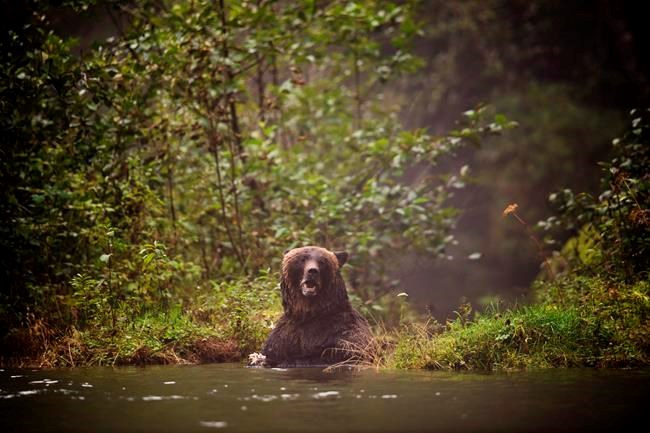A new survey suggests grizzly bear numbers in Alberta's central Rocky Mountains have doubled since 2005.
The survey says there are about 88 grizzlies in 7,300 square kilometres of summits and foothills between the Trans-Canada Highway and Highway 11 roughly 200 kilometres to the north. That's up from 42 bears in 2005.
"That population has doubled," said Gordon Stenhouse, the biologist who led the survey done between 2005 and 2018.
The results follow an earlier survey in another region that saw bear populations double. That work, also by Stenhouse, found that grizzly numbers in the northern Rockies had increased to 74 from 36 between 2004 and 2014.
Stenhouse also released a survey of bears in the Swan Hills region in northwestern Alberta. He estimated 62 bears live there — "more bears than we thought were there," Stenhouse said.
The new survey didn't include Banff National Park. Parks Canada says 62 bears live in the park at least some of the time.
Stenhouse's tally was done by setting up scent lures of rotting cattle blood mixed with canola oil and surrounding them with barbed wire. The bears climbed over or under the wire and left tufts of hair behind, which were then subjected to DNA analysis.
Stenhouse credits two main factors for the bruin boom: "Not as many bears being killed and food resources are plentiful."
Alberta ended its grizzly hunt in 2006, which removed a major cause of bear deaths.
Logging has also created a younger, more open forest favourable to bears, Stenhouse said.
"When you have more young forest, you have more young whitetail deer and moose and species that are associated with younger forest stands. Those are prey items for grizzly bears."
Stenhouse credits the industry with logging in ways that are easier on bears.
"Much more attention has gone into road planning and access management. (Foresters) have been using some of the research tools that we've generated."
The younger forest does create problems of its own.
Some species, including caribou and weasels, need old forests. Forestry also creates roads and more access for humans is generally bad news for wildlife.
"But as long as we can keep human-caused mortality down, it looks like bear foods and habitat are doing OK," Stenhouse said.
"This is great news for grizzly bears," said Aerin Jacob, a biologist with the Y2Y Initiative, which works to preserve wildlife corridors from Yellowstone in the United States to Yukon.
But prime bear habitat has to be balanced with other forest stands that support different species, she said.
"We need to maintain natural variability."
Forests are also coming under increased pressure from recreational and industrial users. Permitted roads for coal exploration, for example, already exceed limits in Alberta's grizzly bear recovery plan in some parts of the animal's range.
"Some of the ways we have to focus conservation efforts are about roads and about human-wildlife coexistence," said Jacob. "We know very clearly that more roads is bad news."
Provincial statistics from 2009-18 show that 129 of 208 human-caused grizzly deaths were accidental or as a result of illegal kills — both related to roads.
Jacob said it's also important to keep the big picture in mind.
"This might be good news in a couple of these bear management areas, but let's think about how grizzly bears are doing overall and how much of their habitat has been lost overall."
This report by The Canadian Press was first published March 31, 2021.
— Follow @row1960 on Twitter
Bob Weber, The Canadian Press




